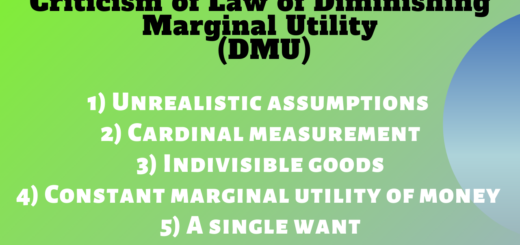Features of Macroeconomics | (8 Features) Free Economics Blogs
Table of Contents
Features of Macroeconomics
Meaning of Macroeconomics:
Macroeconomics is the branch of economics that analyses the entire economy. It deals with the total employment, national income, national output, total investment, total consumption, total savings, general price level interest rates, inflation, trade cycles, business fluctuations, etc. Thus, macroeconomics is the study of aggregates.
Definitions of Macroeconomics
1) J. L. Hansen – “Macroeconomics is that branch of economics which considers the relationship between large aggregates such as the volume of employment, total amount of savings, investment, national income, etc.”
2) Prof Carl Shapiro – “Macroeconomics deals with the functioning of the economy as a whole.”
- Microeconomic Definition | Historical Review of Microeconomics
- Scope Or Nature of Microeconomics
- Features of Microeconomics
- Importance of Microeconomics
Features of Macroeconomics
1) Study of Aggregates:
Macroeconomics deals with the study of the economy as a whole. It is concerned with the aggregate concepts such as national income, national output, national employment, general price level, business cycles, etc.
2) Income Theory:
Macroeconomics studies the concept of national income, its different elements, methods of measurement, and social accounting. Macroeconomics deals with aggregate demand and aggregate supply. It explains the causes of fluctuations in the national income that lead to business cycles i.e. inflation and deflation.
3) General Equilibrium Analysis:
Macroeconomics deals with the behaviour of large aggregates and their functional relationship. General Equilibrium deals with the behaviour of demand, supply, and prices in the whole economy.
4) Interdependence:
The macro analysis takes into account interdependence between aggregate economic variables, such as income, output, employment, investments, price level, etc. For example, changes in the level of investment will finally result into changes in the levels of income, levels of output, employment, and eventually the level of economic growth.
5) Lumping Method:
The lumping method is the study of the whole economy rather than its part. According to Prof. Boulding, “Forest is an aggregation of trees but it does not reveal the properties of an individual tree.” This reveals the difference between microeconomics and macroeconomics.
6) Growth Models:
Macroeconomics studies various factors that contribute to economic growth and development. It is useful in developing growth models. These growth models are used for studying economic development. For example, Mahalanobis growth model emphasized basic heavy industries.
7) General Price Level:
Determination and changes in the general price level are studied in macroeconomics. The general price level is the average of all prices of goods and services currently being produced in the economy.
8) Policy-oriented:
According to Keynes, macroeconomics is a policy-oriented science. It suggests suitable economic policies to promote economic growth, generate employment, control of inflation, and depression etc.



This is nice one
This is nice one
Hazrat Md Mostofa ne banai ye sab rule
Hazrat Md Mostofa ne banai ye sab rule